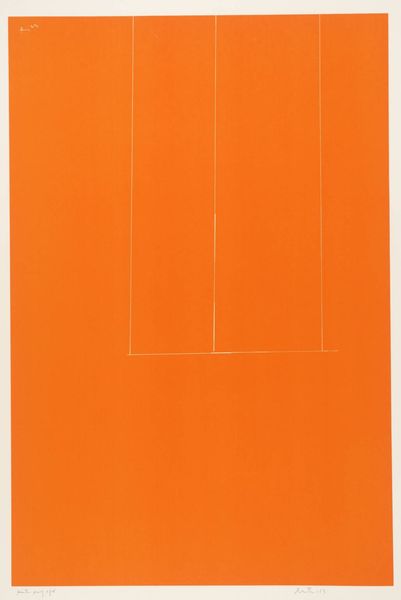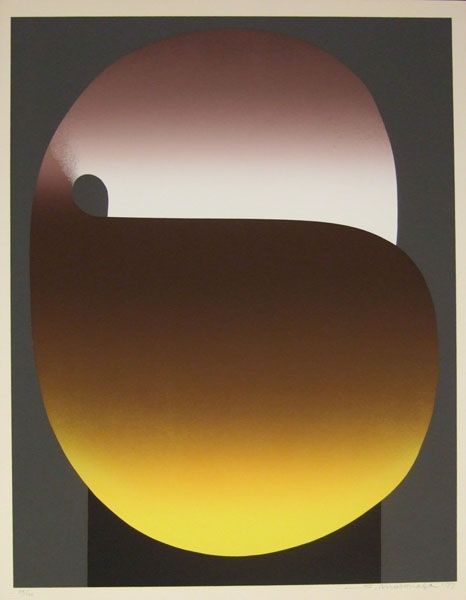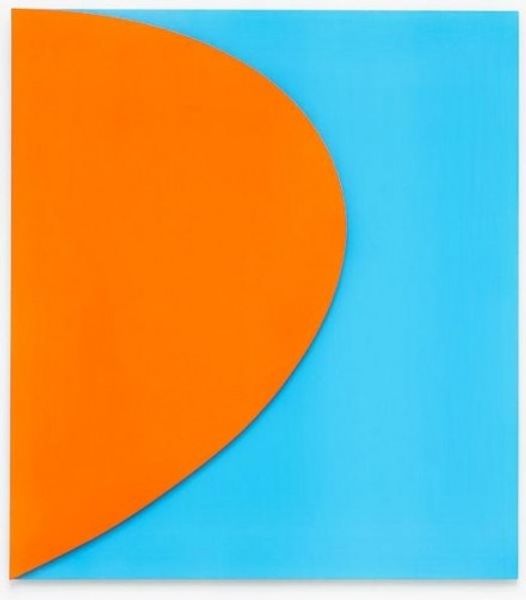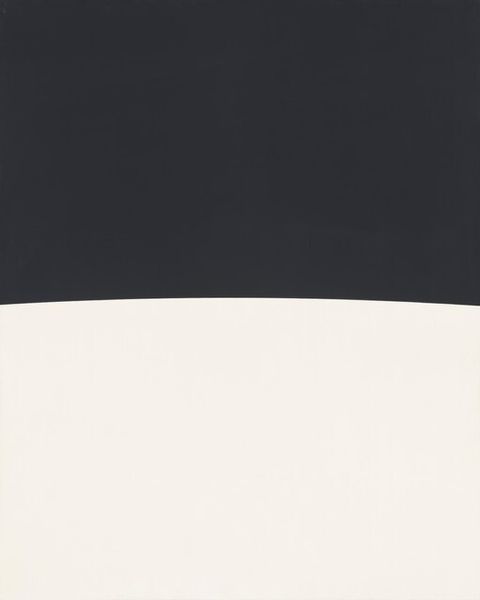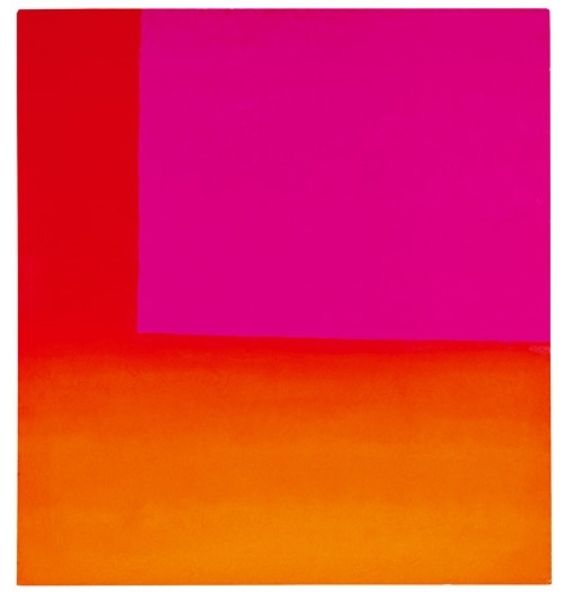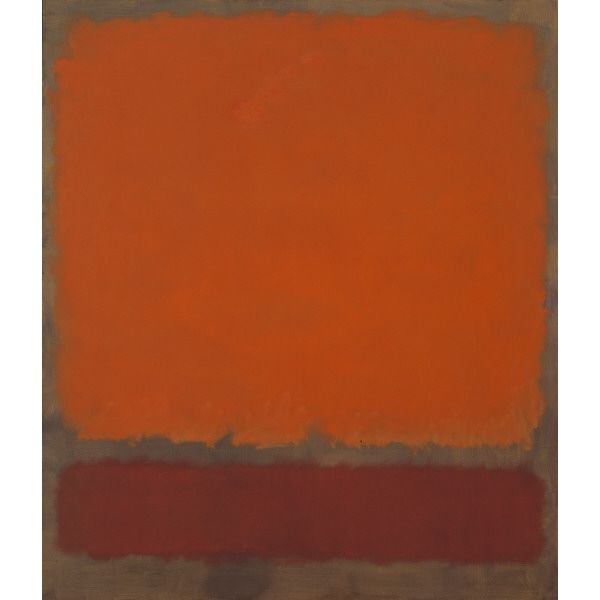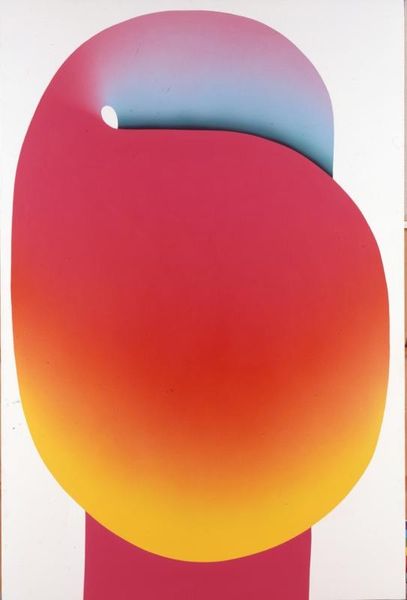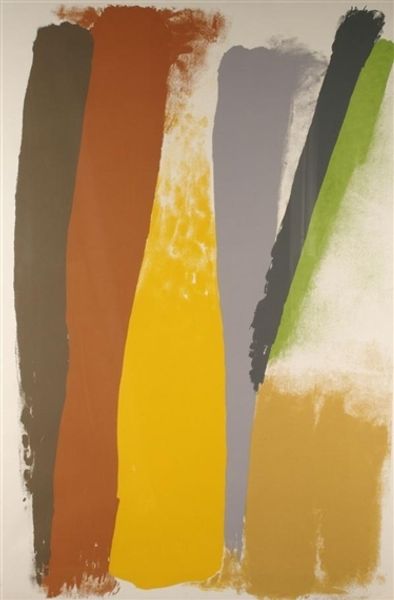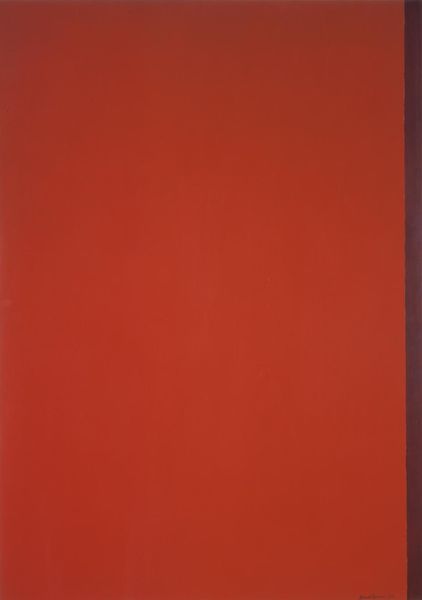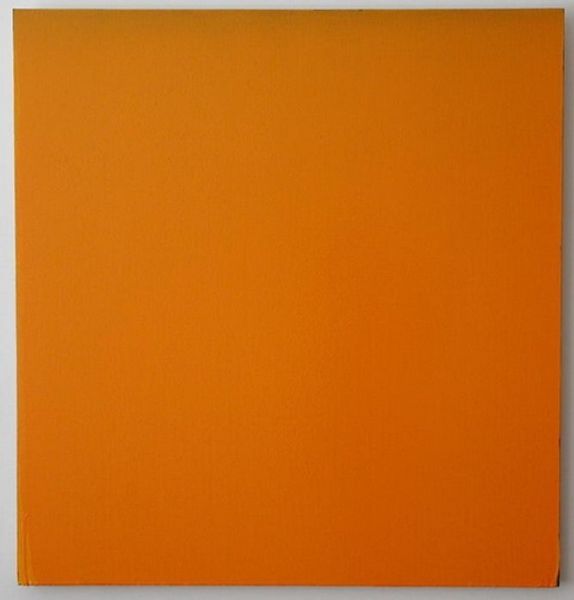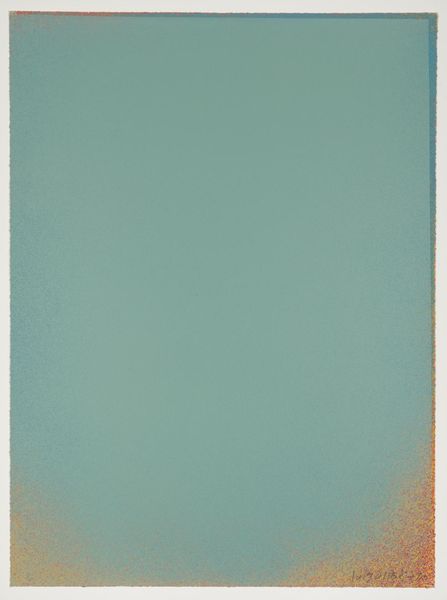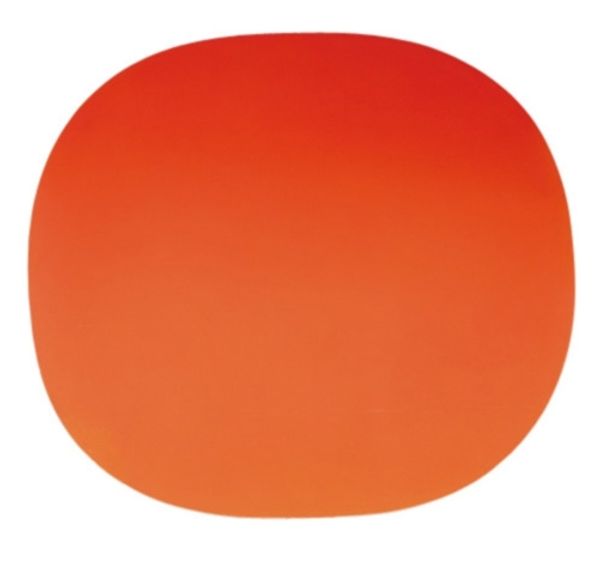
drawing, collage
#
drawing
#
collage
#
minimalism
#
organic shape
#
minimal pattern
#
geometric
#
abstraction
#
hard-edge-painting
Dimensions: sheet: 64.45 × 50.8 cm (25 3/8 × 20 in.)
Copyright: National Gallery of Art: CC0 1.0
Editor: Here we have Leon Polk Smith’s Untitled from 1958, a collage and drawing that presents as pure abstraction. The dark field hovering above a bright orange semi-circle creates such a strong visual tension. What do you see in this piece, approaching it from a formalist perspective? Curator: Precisely the tensions, the stark oppositions. The essence of this piece resides in the interplay between the shapes themselves, their color, and the negative space they define. Observe how the artist meticulously crafts a dialogue between the curve and the rectangle. The very precise edges of each form denies the texture of their making. What semiotic reading might we give to that choice, do you think? Editor: Perhaps that smoothness elevates the shapes to pure form, rejecting association with the hand. It’s so interesting that the colors, being simple as they are, carry so much weight in balancing the artwork’s structure. The warmness is pulled upward into the deep cool tone of the dark mass above. How much does this simple arrangement play into Smith’s Hard-edge painting approach? Curator: Indeed. "Hard-edge" isn't merely a descriptive term, but a focused visual strategy. By eliminating any trace of the artist’s hand, and through deploying flat, unmodulated planes of color, Smith forces the viewer to confront the artwork as pure visual experience. Without the interruption of texture or gesture, we're left with the bare bones of composition: shape, color, and their relationships. How does this relate to its impact? Editor: It becomes distilled; purified. By focusing only on color and composition it lets the relationship be the driving force of the work. Curator: Precisely. This isn't about representing the external world, but about constructing an internal one through pure visual means. We perceive relationships instead of referencing something external. Editor: I understand. I appreciate how approaching it this way moves us beyond subject matter and into the core dynamics of the art itself. Curator: Agreed. Recognizing those elements allows the essence of an artwork's language to speak directly.
Comments
No comments
Be the first to comment and join the conversation on the ultimate creative platform.
